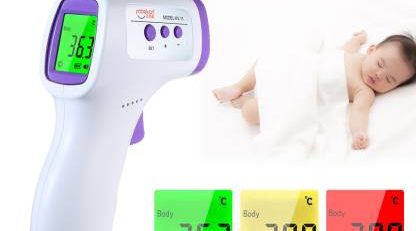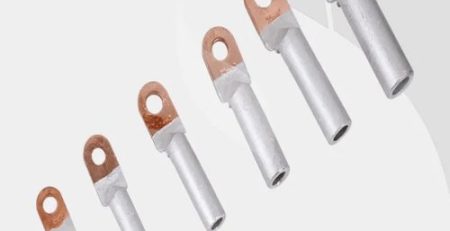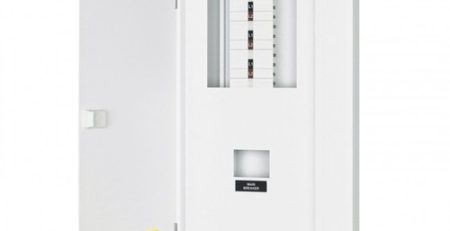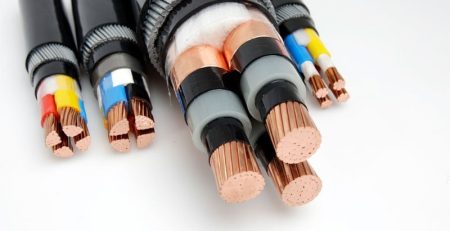Chiller Performance: Testing, Inspection and Maintenance
Comprehensive chiller maintenance can extend the life of equipment, improve its reliability, save scarce refrigerant, and reduce energy and other operating costs while buying you time to work out a long-range plan.
Testing and inspection
You’ll need design specifications, equipment manuals and repair history for each component, and a cost history for purchase, repairs and operation. Are some components getting more repairs and costing more than others? Are annual energy costs increasing faster than rate increases? Have recent costs exceeded past costs? Are your costs higher than costs at other similar facilities? Are they higher than averages from your professional association? You’ll want to do this testing every year or two, so set up a recordkeeping system if you don’t have one. Decide if you want to test in-house or use an inspection agency with the instrumentation and professional know-how.
If you decide on a professional, your maintenance staff will have to turn on and set the system for the inspector, change drive ratios, add dampers if needed, replace worn parts, and show the inspector where panels and equipment are located. Tell your equipment vendor and consulting engineer about the inspection so they can provide design information about the original system.
You’ll need to conduct air balance, water balance and sound testing. The components tested are:
• air-moving equipment
• supply and exhaust fans
• diffusers and grilles
• water-balance elements
• circulating water pumps
• cooling towers
• chillers
• air- and water-cooled condensers
• ducting.
A balance test on a packaged unit takes about a day; on built-up units, at least two or three days or more for multi-zone or multi-unit systems. All testing instruments should be calibrated within six months of testing.
Air-balance testing
You’ll need to do air-balance testing first because system air must be in balance for water-balance testing to proceed properly. Special tools and instrumentation used are:
• hot wire anemometer
• rotating vane anemometer
• self-timing speed counter
• pitot tubes 18-60 inches
• velocity meters
• clamp-on ammeter
• static tips
• several 8-inch stem thermometers
• motorized psychrometer
• hand sling psychrometer
• micromanometer
• inclined gages 3-inch and 10-inch
• multi-point surface pyrometer
• combustion test sets
• electric drill motors
• balancing hoods
• pyrometer
• recording thermometers
• smoke gun
• and two-way radios.
The process includes testing and adjusting blower rpm to design; motor actual vs. full load amps; pitot tube traverse of supply ducts and design CFM of fans; system supply and exhaust static pressures; design vs. actual recirculating air; design CFM of outside air; entering wet and dry bulb air temperatures; exiting wet and dry bulb air temperatures; adjusting all supply and return air ducts and zones to design CFM; adjusting each diffuser grille and register to within plus or minus 10 percent of design requirements; FPM velocity at each diffuser, grille and register; and adjustments to minimize drafts. Also, all controls must be checked for proper calibration and settings.
Water-balance testing
Water-balance testing should be completed only after air-balance testing is complete and the air system is properly balanced. In addition to the previously mentioned tools, you’ll need water-pressure gages, a differential gage set for reading orifice and venturi stations, and meter sets for reading velocity and flow. You’ll also need vibration analyzers, and air and water pollution test equipment.
The water-balancing process includes:
• starting and setting all controls to proper settings
• removing and cleaning strainers
• examining water for proper treatment and cleaning
• checking pump rotation
• verifying that expansion tanks are charged and not air or water bound
• checking air vents at top of water system to ensure that they are installed and working
• setting temperature controls to full cooling
• checking operating temperatures of chiller and boilers
• making sure that chilled water pumps are calibrated for proper GPM delivery
• checking existing and return water temperatures
• checking chiller water flow pressure
• monitoring water and balance temperatures at inlet side of cooling coils
• monitoring pressure drop through coils and flow rate
• monitoring pump operating suction and discharge pressures.
List all pump mechanical specifications, motor rated and running amps and water metering device readings.
Sound testing
Old systems loosen up, get misaligned or perhaps were not correctly sound insulated when installed. Thorough sound testing using decibel meters and vibration analysis is a part of the testing and inspection. Sound tests include background sound level with equipment off, total sound level with equipment on, and correction of sound level to equipment only. Sound levels are compared with building specifications using readings in decibels. Equipment vibration absorbers and insulation are checked for effectiveness.
Chiller repair
Before completing repairs, make sure you’ve complied with all safety precautions, such as wearing personal protective equipment and performing lockout and tagout procedures. The most common repairs required as a result of test data are cleaning and minor adjustments. All systems need filter and duct cleaning on the air side at least once a year. If the filters are tight and duct joints are properly sealed or taped, cleaning won’t be a big job, and the air system will be more efficient. Water, oil and refrigerant sample tests indicate the equipment’s condition. If there’s water in the refrigerant, seals should be replaced. If there is refrigerant, rusted metal or metal filings in the oil sample, inspect the seals, piping, bearings and rotary or reciprocating elements for wear.
Drive gears, bearings, belts and couplings will last for years with a good PM plan. They should be checked at least annually, even if fluids don’t indicate a problem. V-belt drives should be tight on the bottom and slack on top between the sheaves for more arc of contact and less slipping. If the sheave groove bottoms are bright, the V-belts are bottoming out and will slip. Either change the V-belts if they’re worn or change the sheaves if they’ve been slipping and the V-grooves are worn. Worn sheaves will quickly ruin new V-belts.
If belt plies are separated, change the belts. If they’re loose enough so that pressing them in the center between the sheaves moves them more than one thickness of the belt, realign them with a straight edge; then tighten them. Loosen the motor anchor bolts, back the motor away from the driven sheave by turning the motor frame adjusting screw under the motor until the belts are properly tensioned.
Bearings and gears protected with the right amount and type of clean lubricant can run hotter than you can touch — more than 110 degrees — for years without problems. Even new lubricant is not perfectly clean, so in-line oil filters are a good investment. Regular filter inspection and change will uncover problems before they become serious. Pillow block bearings should not be greased too often. Usually, a few shots once every three to six months is adequate. Seals can be damaged by overlubrication. Remove the relief plug before adding grease, and allow the bearing to run awhile to discharge the excess. Check the color and texture for signs of rust, metal, water or other contamination. Rubber gloves and safety glasses or full face protection should be worn where acidic refrigerant might be present.
Safety checks
Regular PM safety and electrical checks are an important part of your annual test and inspection process. Your system documentation will show:
• where these devices are located
• what checks to perform
• how to perform them, and how often
• what tools you need.
Troubleshooting
Start by talking to the requester or tenant to get a description of the problem. For example, if the problem is in a package heating and A/C unit, find out if it’s a cooling or heating problem, or both. Always start with the obvious:
• Is power getting to the system?
• Are the fuses and fused switch contacts good?
• Are circuit breaker contacts clean and tight?
If the heating works but the cooling doesn’t, this probably eliminates the heating circuit controls. Observe operation to confirm this. When you’ve narrowed the possibilities, hop-scotch the electrical circuit in the area of the problem with a voltmeter, set to the circuit’s voltage range. Keep the circuit diagram handy — usually inside the electrical panel door or in the operating and service manual. Sometimes a microswitch or relay sticks open. If you find an open switch — no voltage where a voltage should be present — which should be closed when the circuit is energized, tap it a few times with an insulated screwdriver handle. If this causes the system to resume operation, turn off the system, turn it back on, and repeat the test.
If this confirms that the switch is faulty, replace it. Then try the system again to make sure it’s the only problem, and that the replacement was done properly. When using a tester, it’s good practice to use an alligator clip on one lead. Only one hand is needed to do the testing with the other probe.
Damper leakage
Many trouble calls from improper temperature are from too high a temperature in the duct or temperature time lag. Too high a temperature may be due to delivering mixed air at, say, 62 degrees, when it should be 54-58 degrees. Temperature time lag is too long a time to cool the air during the modulating period resulting in a feeling of discomfort. As much as 35 percent of monthly operating costs can be due to compensation for leakage. To correct this problem and lower your operating costs at the same time, check the zone mixing dampers for leakage. Soft foam plastic on the leading edges of blades seals them better when they are closed. Leaking dampers also increase the noise level.
Manual dampers should be installed off the face of multi-zone units; it’ll provide exact adjustment of total flow. Diffuser, side wall or automatic dampers are only meant for fine adjustment. Check their linkages and range of motion. You cannot field air balance your system without the right number of dampers in the right place.
Preventive/predictive maintenance
Routine PM for most frequently used chillers — electric centrifugal, electric reciprocating and absorption — includes annual lube oil, oil filter element and refrigerant filter-dryer cartridge changes. Oil sampling and inspection for bearing or gear wear particles is done as well as checking magnetic plugs in the oil reservoir.
Rust particles originate in the condenser and indicate air and moisture in the refrigerant system. Chemical analysis of both the refrigerant and oil yield valuable information about the presence and source of contaminants. Fluid leak tests are made twice a year, unless low fluid levels indicate the need to test more frequently. Leaks in the refrigerant system of air and non-condensable gases are best handled by regular purges. Clean tubes after every season and inspect for corrosion, erosion, stress corrosion and fatigue caused by thermal stress. Always use a water treatment specialist for initial charging of a new system and for continuous monitoring. Current testing instruments can detect tube cracks early; replace the tubes as soon as they’re discovered.
The water solution of lithium bromide used as a refrigerant in absorption chillers is very corrosive. It attacks steel, copper and copper alloys in 300 F air or higher. Use corrosion inhibitors in the manufacturer-recommended range; check it twice a season. Also check alkalinity and presence of ammonia, copper or iron which may be present in small (parts per million) quantities. Water strainers and traps should be checked, cleaned and adjusted annually.
Vibration analysis of rotating equipment at the bearings should be completed during operation to check for bearing and gear wear, bent shafts, imbalance in fan and blower blades, and coupling or other misalignment in air handling equipment, water pumps, chillers and motors. Infrared scanning of electrical switches, circuit breakers, motors and gear boxes will detect overheating conditions and help identify loose or corroded electrical contacts, hot motor windings, bad bearings and gears and low oil levels. These predictive maintenance inspections should be done at least annually after establishing a baseline or normal reading at each point — and do them before the major shutdowns so findings can be analyzed in time to decide what repairs are required. This approach allows lead time for obtaining spares, special tools and equipment and planning the work.
BY by GAHZLY
#Chiller #Performance #Testing #Inspection #Maintenance











Leave a Reply
You must be logged in to post a comment.